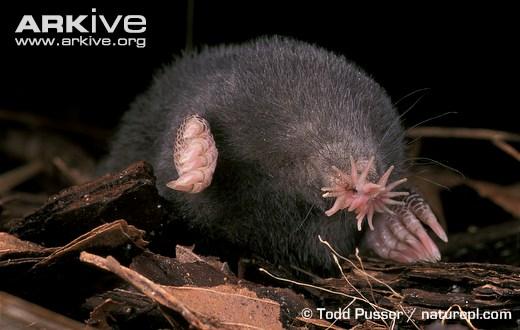

This review aims to present the blind mole rat as an ideal, novel neuroethological model for studying aggressive and solitary behaviors. They possess specialized sensory systems for social communication and navigation, which allow them to cope with the harsh environmental conditions underground. BMRs reside underground, in self-excavated tunnels that they rarely leave. It is exceedingly solitary, territorial, and aggressive.

Commun Biol 5, 526 (2022).On the social scale, the blind mole rat (BMR Spalax ehrenbergi) is an extreme. Fossorial adaptations in African mole-rats (Bathyergidae) and the unique appendicular phenotype of naked mole-rats. Montoya-Sanhueza, G., Šaffa, G., Šumbera, R., Chinsamy, A., Jarvis J. This study brings new information about the evolution and development of fossorial adaptations in African mole-rats, and help us to understand how morphological evolution could be influenced by different functional, ecological and social factors in subterranean mammals.īy Germán Montoya-Sanhueza, Anusuya Chinsamy and Nigel C.

Because naked mole-rats grow very slowly, it is possible that their skeletons do not develop the fully adult characteristics like those observed in other bathyergids. Additionally, the reduced fossorial specialization of their limbs may be a direct result of their growth rates, which appear to be the slowest among the family. It may well be that the extremely high levels of cooperation within their colonies, with as many as 300 individuals living and working together in complex burrows systems, where they also rear many juveniles, may have precluded them from experiencing strong selection for extreme limb specialization as seen in other burrowers that do not have such complex social systems. The answers may lie in the fact that the naked mole-rats have highly specialized incisors and jaw muscles that allows them to build their burrow systems without the need for extreme specialization of their limbs. But why did naked mole-rats not develop the limb specializations that their more derived relatives developed? This is quite interesting since it shows that although naked mole-rats belong to the family Bathyergidae, they still resemble their ancestral relatives in terms of certain features in their skeletons. They live underground in large social colonies, but surprisingly, they have rather a simple tubular humerus, lacking bony protuberances for anchoring large muscles, and the bones of the lower leg are unfused, like their more distant above-ground relatives, such as the rock dassie rat, the cane rat and the porcupine. Naked mole-rats have strikingly different limb bones as compared to their closest fossorial relatives even though they are highly specialized subterranean rodents. However, the fossorial naked mole-rats prove to be an exception. The results showed that they have similar features to other fossorial mammals, even though they have different digging modes i.e., some mole-rats dig primarily with the claws while others with the incisors. This study examined more than 380 individuals from different species of African mole-rats. Another feature evident in the lower limb of many fossorial mammals is that instead of being separate, the two bones of the lower leg (tibia and fibula) fuse, which allows them to resist the high forces experienced during digging. These latter animals are truly subterranean, and they develop a wide range of morphological specializations that distinguishes them from their above-ground close relatives.įor example, most fossorial mammals have a well-developed bony structure, the deltoid tuberosity, that sticks out of the humerus (arm bone), and which serves for the attachment of the large muscles used for digging. Some of them are equipped with long claws, while others rather have incisors that stick out of their mouths, and yet others are so specialized that they live completely underground in complex burrow systems. This study brought together several researchers from different institutions (both locally in South Africa as well as internationally) and resulted in the identification and description of the unusual morphology of the limb bones of naked mole-rats as compared to those of other burrowing animals.īurrowing or fossorial animals often have highly specialized bodies (especially heads, arms, legs and teeth) that allow them to dig into the ground to seek food and/or shelter.


 0 kommentar(er)
0 kommentar(er)
